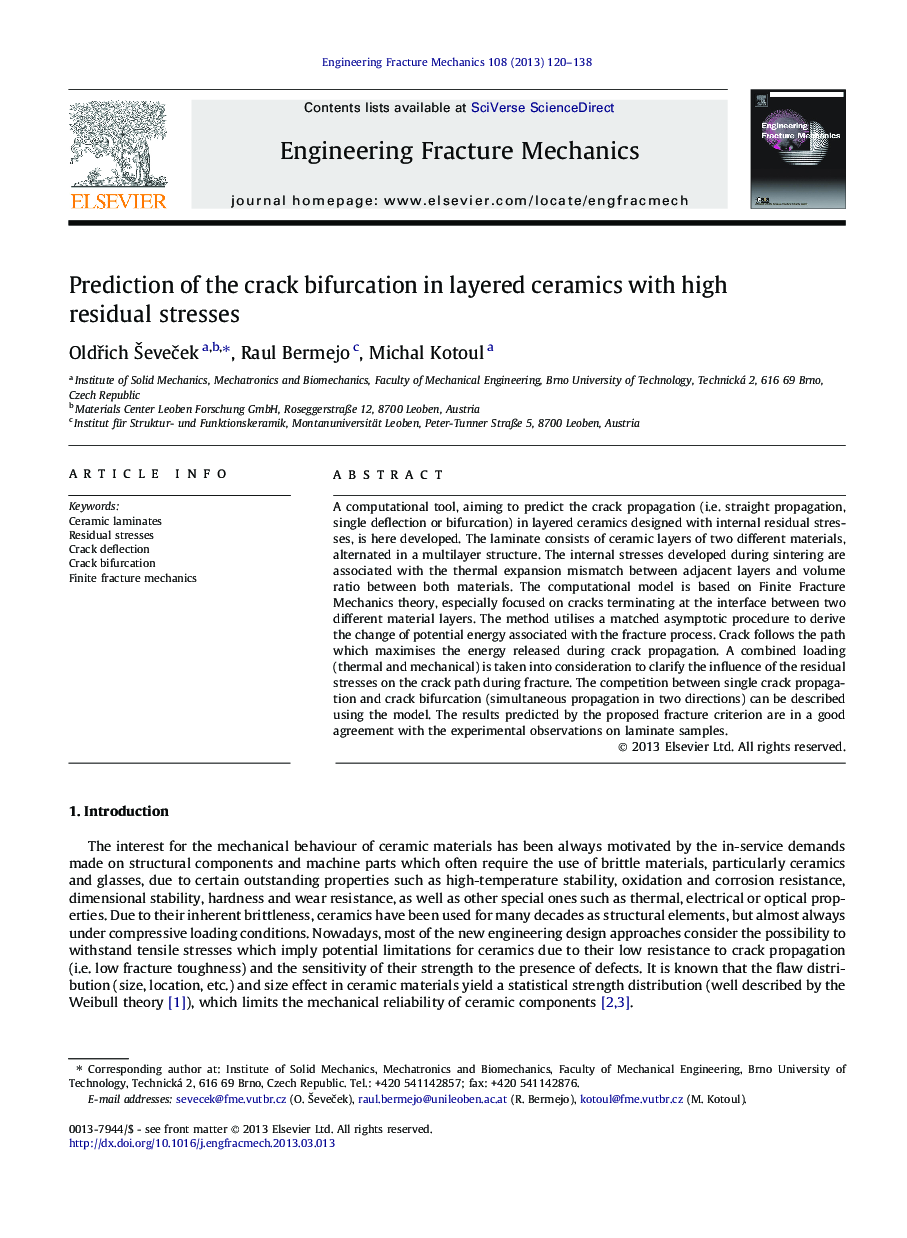| Article ID | Journal | Published Year | Pages | File Type |
|---|---|---|---|---|
| 770601 | Engineering Fracture Mechanics | 2013 | 19 Pages |
•We predict the crack bifurcation in ceramic laminate using the energy criterion.•We use an advantage of the Finite Fracture Mechanics together with FEM calculations.•Crack follows that path which maximises the energy released during the fracture.•The crack path predictions are in a good agreement with experimental observations.•The crack bifurcation phenomena is influenced by the level of residual stresses.
A computational tool, aiming to predict the crack propagation (i.e. straight propagation, single deflection or bifurcation) in layered ceramics designed with internal residual stresses, is here developed. The laminate consists of ceramic layers of two different materials, alternated in a multilayer structure. The internal stresses developed during sintering are associated with the thermal expansion mismatch between adjacent layers and volume ratio between both materials. The computational model is based on Finite Fracture Mechanics theory, especially focused on cracks terminating at the interface between two different material layers. The method utilises a matched asymptotic procedure to derive the change of potential energy associated with the fracture process. Crack follows the path which maximises the energy released during crack propagation. A combined loading (thermal and mechanical) is taken into consideration to clarify the influence of the residual stresses on the crack path during fracture. The competition between single crack propagation and crack bifurcation (simultaneous propagation in two directions) can be described using the model. The results predicted by the proposed fracture criterion are in a good agreement with the experimental observations on laminate samples.
